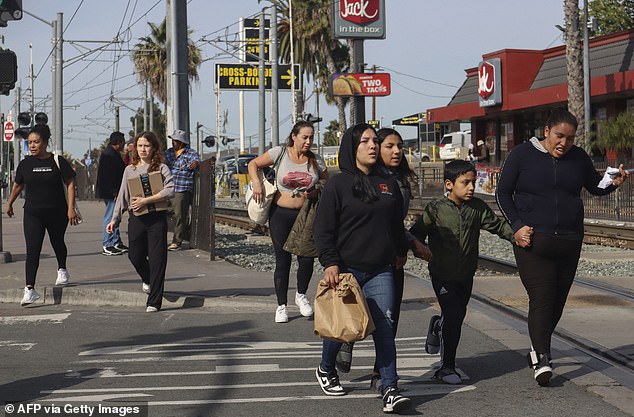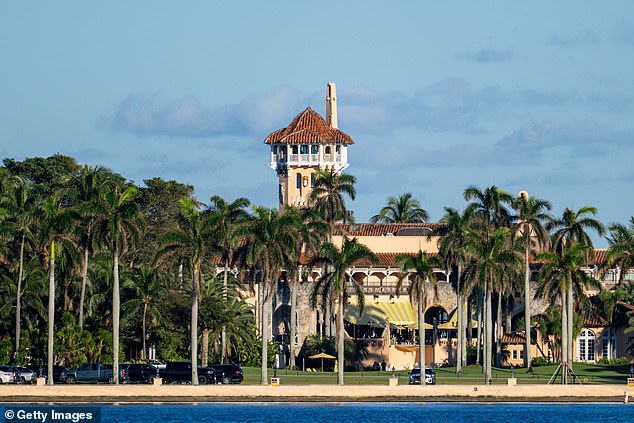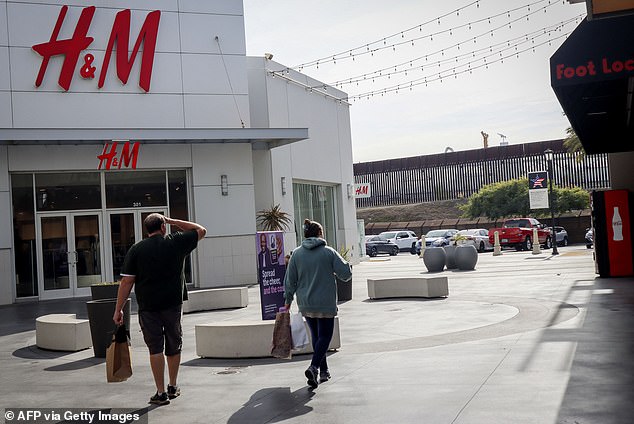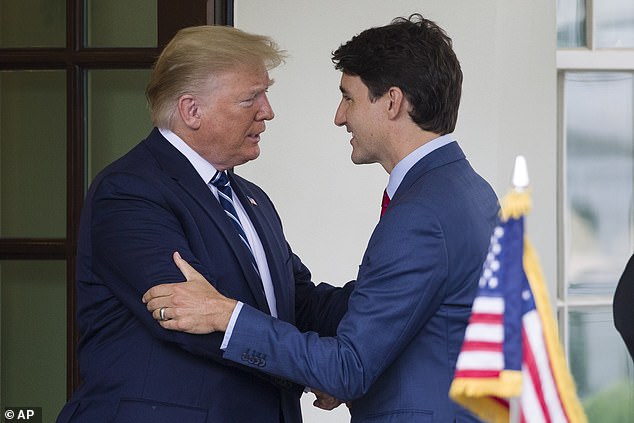US consumers would bear the brunt of Donald Trump’s proposed tariffs, a new analysis showed on Tuesday evening as the world braced for a new era of US protectionist policies.
It comes as the newly elected president issues new threats that push the US toward a potential trade war with both adversaries and allies.
Trump sent shockwaves through global markets on Monday when he posted that he would impose 25 percent tariffs on all products from Mexico and Canada if they did not stem the flow of migrants and drugs across the US southern and northern borders.
He also threatened additional 10 percent tariffs on China if they did not meet his demands.
The targeted countries – the United States’ three largest trading partners – responded by warning they would retaliate with their own tariffs on goods.
Mexican President Claudia Sheinbaum made it clear she was ready to hit back at Trump and Canada’s Justin Trudeau pledged to work with the new president to find a solution.
Liu Pengyu, a spokesman for the Chinese embassy in Washington, denounced claims that Beijing is knowingly allowing fentanyl to flow into the United States.
Retail experts also revealed that Trump’s tough policies would also ultimately impact shoppers with higher prices for cars, gasoline, smartphones and appliances.
Donald Trump’s proposed tariffs on goods from Canada (Prime Minister Justin Trudeau pictured), Mexico and China prompted threats of retaliation from around the world on Tuesday.
More than $1.3 trillion worth of goods were imported to America from the three countries last year, according to data from the US Census Bureau.
Meanwhile, Trump’s campaign team signed papers with President Joe Biden’s White House staff to formally initiate the transition to his second term.
The action against the United States’ three largest trading partners caused market fluctuations and left the world guessing whether the threats were a negotiating tactic by the newly elected president.
However, US stock markets posted new records on Tuesday, shrugging off tariff threats.
Both the Dow Jones and the S&P 500 recorded record highs, with many investors seeing the new president’s words as a bargaining chip.
“In theory, higher rates shouldn’t be good news for stocks. But you know, I think the market has chosen to look at it as a negotiating tactic,” said Steve Sosnick of Interactive Brokers.
Still, Mexico’s Sheinbaum warned of serious economic consequences for the U.S. and Mexico, including job losses, as she suggested possible in-kind retaliation.
“One tariff will follow in response to another, and so on, until we endanger our shared businesses,” Sheinbaum said in a letter to Trump, which she read at a news conference.
Justin Trudeau, the Canadian prime minister, said he would work with Trump.
He said: ‘This is a relationship that we know needs a certain amount of work, and that’s what we’ll do. One of the really important things is that we all work on this together.”
Trump’s proposed tariffs could cost each American consumer as much as $810 extra a year, according to James Knightley, ING’s chief economist.
But even before the newly elected president issued his latest threats, his proposed tariffs from the campaign trail would cost American consumers up to $2,400, ING found.
In total, that would amount to $3,200 per year,
Their analysis before Trump’s latest threats looked at Trump’s sweeping plan to impose new tariffs, including 60 percent tariffs on Chinese imports and 10 to 20 percent tariffs on other countries that he promised during the campaign in a attempt to promote and protect American manufacturing.
The study also found that the new rates could increase inflation at a time when prices are already rising for Americans across the country.
“This potential increase in consumer costs and inflation could have widespread economic consequences, especially in an economy where consumer spending accounts for 70 percent of all activity,” researchers wrote.
Additional tariffs now proposed by Trump could make the situation even more painful for consumers as the higher costs further down the supply chain pass.

Mexican President Claudia Sheinbaum made it clear she was ready to hit back at Trump

Trump sent shockwaves through global markets on Monday when he posted that he would impose 25 percent tariffs on all products from Mexico and Canada if they did not stem the flow of migrants and drugs across the US southern and northern borders.
The cost of imposing Trump’s 25 percent tariffs on Canada and Mexico would mean an estimated $680 extra per American, Knightley told DailyMail.com.
He based his estimates on $896 billion in goods the U.S. imported from Canada and Mexico last year, with no substitutes for American-made products.
Adding additional 10 percent tariffs on all Chinese products, on top of Monday’s threat against Canada and Mexico, could bring those new costs to as much as $810, for a total of more than $3,200.
Knightley noted that the $810 figure represents a worst-case scenario in which there are no substitutions for purely U.S.-made products to replace foreign-made goods.
He also said a stronger dollar could at least partially soften the impact, but would still lead to higher prices.
“That will be more painful for lower-income households who spend a larger share of their income on physical products,” Knightley said.
He noted that this would have a smaller impact on higher-income households “who spend a greater share of their income on services and ‘experiences’ such as travel, for which there are no fees.”
The new estimates come after Trump posted on social media targeting Mexico, Canada and China.
He claimed he would impose the new tariffs on Mexico and Canada through an executive order on his first day in office on January 20 until such time as “Drugs, specifically Fentanyl, and all illegal aliens will stop this invasion of our country !’
In his separate post threatening China, Trump said the additional 10 percent tariffs would be imposed on all products until China prevents drugs like Fentanyl from being sent to the US.

Shoppers return with their purchases to the US-Mexico border in San Ysidro, California

Trump, together with aides at Mar-a-Lago, is shaping his second administration and preparing for Thanksgiving

The border wall can be seen in the distance as shoppers walk with their purchases at Plaza Las Americas Mall near the US-Mexico border in San Ysidro, California
ING found that even before Trump’s latest tariff threat, his previous proposals, combined with the restrictions resulting from his proposed immigration policy, could lead to a one percentage point increase in inflation.
Mexico is the US’s largest trading partner; last year, $475 billion worth of goods were imported from the country, The Washington Post reported.
The majority of these imports were manufactured items such as cars, computers and home appliances, which could increase in price under the proposed tariffs.
A tariff with Canada as America’s second-largest trading partner would also have widespread consequences.
The US imported more than $418 billion in goods from Canada alone last year, including crude oil and machinery such as turbines and engines.
The US also imports billions in plastics, pharmaceuticals, metals and agricultural products annually from its northern neighbor.

